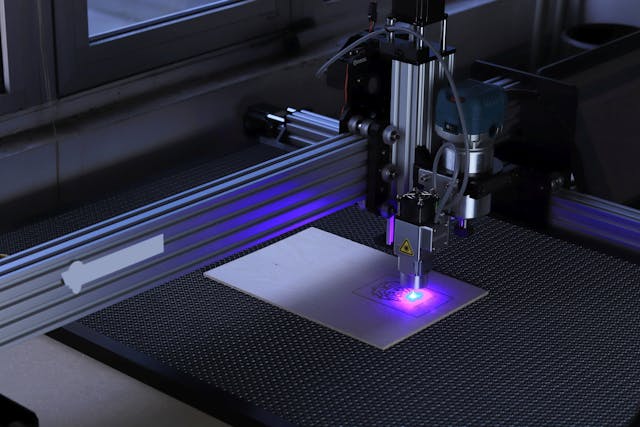How Laser Engraving Enhances Woodworking Precision and Quality
Laser engraving has revolutionized woodworking by enabling artisans and manufacturers to achieve unparalleled precision and quality. This article explores how the application of laser technology elevates woodworking, focusing on the mechanisms and techniques that contribute to superior craftsmanship.
The Mechanism of Laser Engraving
Laser engraving operates by directing a concentrated beam of light onto the wood surface, which burns or vaporizes the material to create intricate designs. The precision of this process is controlled by adjusting the laser's power and speed, allowing for detailed and consistent patterns that are difficult to replicate with traditional tools. The use of a high-quality laser cutter, such as a good CO2 laser machine, is crucial for achieving these results.
Advantages of Laser Engraving in Woodworking
Precision: Laser engraving excels in producing fine details and complex designs. Unlike manual carving, the laser can follow intricate paths with micrometer accuracy, ensuring every line and curve is executed perfectly.
Quality Consistency: By digitizing designs, woodworkers can replicate patterns with consistency across multiple pieces, maintaining uniformity in both large-scale production and bespoke projects. High-quality imaging software plays a vital role in this, ensuring that the digital blueprint is accurately translated onto the wood.
Speed and Efficiency: Laser engraving significantly reduces the time required for complex designs, making it an efficient choice for both individual artisans and large manufacturers. The automation of repetitive tasks also minimizes human error and enhances productivity.
Techniques for Enhancing Laser Engraving Quality
Wood Selection: The choice of wood is critical for achieving the best engraving results. Hardwoods like maple and cherry often provide cleaner cuts and more defined engravings, while softer woods may require adjustments in laser settings to prevent over-burning.
Proper Maintenance of Laser Engravers: Regular maintenance, including cleaning the laser lens and ensuring proper alignment, is essential to maintain the engraver's accuracy and longevity. A well-maintained machine produces sharper, more precise engravings and reduces the likelihood of errors.
Prepping the Wood Surface: Before engraving, the wood surface should be free of dust, oils, and other contaminants that could affect the laser’s performance. Proper surface preparation ensures that the engraving is clean and crisp, with no unintended marks or blemishes.
Quality Checks: Conducting regular inspections during and after the engraving process helps identify and correct issues early, ensuring that the final product meets the desired quality standards. This step is especially important in large-scale production, where consistency is key.
Applications of Laser Engraving in Woodworking
Laser engraving is used in a variety of woodworking projects, from personalized gifts and decorative items to functional pieces like furniture and signage. The ability to customize designs makes laser engraving a popular choice for both industrial applications and artisanal crafts.
Challenges and Considerations
Despite its advantages, laser engraving on wood can present challenges such as burn marks or uneven cuts. Addressing these issues requires careful calibration of the laser settings and, in some cases, post-processing techniques like sanding or staining to achieve the desired finish.
Conclusion
Laser engraving has become an indispensable tool in modern woodworking, offering unmatched precision, consistency, and efficiency. By understanding the mechanisms and techniques involved, woodworkers can harness the full potential of this technology to produce high-quality, intricate designs that stand out in any project.

